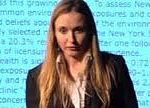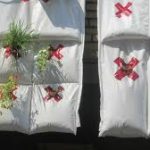Inspire Speakers Series speakers kicked off what looks like an amazing series of speakers who will be helping us better understand and help take back our environment.
The GBA series includes a local speaker and national speaker and yesterday’s local leader was Robert Vagt, President of the Heinz Endowments. Bob spoke about The Breathe Project that is working to clean up the air in Pittsburgh. In what is today

referred to as one of the world’s most livable cities, our air has gone from being the dirtiest and most disgusting air in the world (during the steel industry days) to just being pretty darn filthy (284 days/year have poor air quality) . This results in high rates of asthma, dangerous levels of toxins and increased risk for heart disease and cancer.

But simple remedies, as Bob discussed, are helping to reclaim the air and improve the resilience of the community. For example, 3
rd and 4
th graders at Community Day school went out to their arriving school buses with donuts and coffee and asked the drivers to turn off their ignitions to decrease idling exhausts. The next day parents who drove up to pick up kids were asked to do the same. Soon, exhaust was exhausted from in front of the school. The air gets cleaner and the environment doesn’t just bounce back but it bounces forward.
Well as if Bob’s presentation wasn’t enough to get me connecting to environmental resilience, the next speaker, Natalie Jeremijenko presented some points of view that can only happen when you put together brilliance in art and science. Named the 2011 Most Influential Woman in Technology by Fast Company and a Professor at New York University, Natalie holds degrees in engineering, art, neuroscience and computer technology and uses both her science and art to create playful and meaningful efforts to improve lives and the environment.

Some include:
- An environmental health clinic at NYU that helps people who have health concerns like asthma create improved environments in their own world as a strategy for health.
- A zany tadpole adoption project where she gives out tadpoles to friends and colleagues. The tadpoles are named for local politicians who are involved in monitoring water quality. Adopting a tadpole means you have responsibility for all things tadpole before releasing them into the environment. Raising tadpoles in important since they have “exquisite” biosensors, so like the canary in the mine, they know things about the environment well before we do.
- An urban farming model that uses “AgBags to create vertical farms in our cities. These AgBags are a pocketed plant holder that mediates water distribution and can grow anything from flowers to food.

- A “mussel choir” that enlists the shelled species in “singing” about the quality of our rivers through biosensors and audio software.
Natalie’s descriptions started to blow my mind as I kept hearing one creative idea after another, so many in fact, that I started to tune out. But my tuning out on her work was soon helping me tune into my work and about how resilience in our lives is hardwired and built in. Working to reclaim our environment and our lives is not just an option, but a biological imperative.]]>



 referred to as one of the world’s most livable cities, our air has gone from being the dirtiest and most disgusting air in the world (during the steel industry days) to just being pretty darn filthy (284 days/year have poor air quality) . This results in high rates of asthma, dangerous levels of toxins and increased risk for heart disease and cancer.
referred to as one of the world’s most livable cities, our air has gone from being the dirtiest and most disgusting air in the world (during the steel industry days) to just being pretty darn filthy (284 days/year have poor air quality) . This results in high rates of asthma, dangerous levels of toxins and increased risk for heart disease and cancer.
 But simple remedies, as Bob discussed, are helping to reclaim the air and improve the resilience of the community. For example, 3rd and 4th graders at Community Day school went out to their arriving school buses with donuts and coffee and asked the drivers to turn off their ignitions to decrease idling exhausts. The next day parents who drove up to pick up kids were asked to do the same. Soon, exhaust was exhausted from in front of the school. The air gets cleaner and the environment doesn’t just bounce back but it bounces forward.
Well as if Bob’s presentation wasn’t enough to get me connecting to environmental resilience, the next speaker, Natalie Jeremijenko presented some points of view that can only happen when you put together brilliance in art and science. Named the 2011 Most Influential Woman in Technology by Fast Company and a Professor at New York University, Natalie holds degrees in engineering, art, neuroscience and computer technology and uses both her science and art to create playful and meaningful efforts to improve lives and the environment.
But simple remedies, as Bob discussed, are helping to reclaim the air and improve the resilience of the community. For example, 3rd and 4th graders at Community Day school went out to their arriving school buses with donuts and coffee and asked the drivers to turn off their ignitions to decrease idling exhausts. The next day parents who drove up to pick up kids were asked to do the same. Soon, exhaust was exhausted from in front of the school. The air gets cleaner and the environment doesn’t just bounce back but it bounces forward.
Well as if Bob’s presentation wasn’t enough to get me connecting to environmental resilience, the next speaker, Natalie Jeremijenko presented some points of view that can only happen when you put together brilliance in art and science. Named the 2011 Most Influential Woman in Technology by Fast Company and a Professor at New York University, Natalie holds degrees in engineering, art, neuroscience and computer technology and uses both her science and art to create playful and meaningful efforts to improve lives and the environment.  Some include:
Some include:
